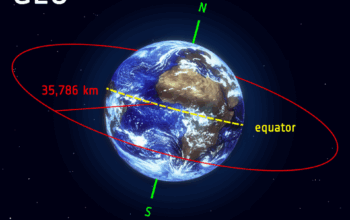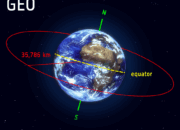In the realm of fundamental particles, few have captivated the imagination quite like the electron. Often depicted as the diminutive harbinger of electricity, this subatomic entity resides at the core of all matter, influencing the very fabric of existence. Recent revelations regarding the electron’s astonishingly prolonged lifetime, now quantified at a staggering 66,000 yottayears, provoke profound questions about the nature of reality and the limits of quantum mechanics. To comprehend this numerical magnitude, it is paramount to contextualize it within both the cosmic scale and the profound implications it holds for our understanding of the universe.
To visualize the enormity of 66,000 yottayears, one might compare it to an eternal twilight—a seemingly everlasting journey through time, where the electron emerges as the epitome of durability amidst the ephemeral nature of existence itself. The yottayear, a nonagenerian unit of time, is an unfathomable quantity, equating to 1024 years. By contrast, the age of the universe is approximately 13.8 billion years, or 1.38 x 1010 years. Thus, the lifespan of an electron eclipses the universe’s temporal narrative by an exceptional multiplicative factor. It marks a threshold where time merges with the concept of immortality. This remarkable longevity poses an intriguing metaphor for endurance, nature’s unfathomable patience, and the stealthy persistence that exists at the subatomic level.
In quantum mechanics, the electron’s existence defies traditional physical boundaries, evoking both curiosity and caution. As a fermion, it adheres to the Pauli exclusion principle, which states that no two electrons can occupy the same quantum state simultaneously. This exclusionary behavior underpins the stability of matter, with electrons orchestrating their arrangement in atomic shells. The revelation of such a protracted lifetime suggests that electrons are not merely transient dancers in the cosmic ballet but rather stalwart participants that contribute to the steadfastness of atomic structures. As such, they can be likened to ancient mariners, enduring the tumultuous tides of the sea while maintaining a steadfast course.
The implications of an electron’s extended longevity offer tantalizing insights into other spheres of scientific inquiry. For instance, the longevity of electrons may shed light on the stability of matter and the potential for complex structures to exist over astronomical timelines. As we continue to unravel the mysteries of dark matter and dark energy, the electron serves as a touchstone for exploring forces beyond our perception. Its erstwhile permanence invites scrutiny of theories pertaining to aging and decay in particle physics. If electrons can transcend the threshold of time, what other hidden facets linger in the quantum world, waiting to be unearthed?
The cerebral underpinnings of this notion stay rooted in particle physics, where the phenomena of decay often unveil stark realities about the forces governing the microcosm. Typically, particles exhibit lifetimes that are measured in fractions of seconds to millionths of seconds before they tumble into decay. The stark contrast presented by the electron’s longevity not only invokes intrigue but also challenges prevailing paradigms. This existential permanence generates hypotheses about conservation laws and the elusive search for a grand unifying theory that encapsulates the behaviors and interactions of all fundamental particles.
Moreover, understanding the implications of the electron’s timeless saga opens venues for exploring the foundations of quantum field theory and the interactions that shape the universe. The standard model of particle physics, while a monumental achievement, has relied upon sporadic observations of transient particles to construct its schema. Engaging with the unprecedented longevity of the electron may motivate physicists to revise existing paradigms regarding particle behavior and interaction protocols, heralding a potential renaissance in theoretical provenance.
From a philosophical standpoint, these discussions induce reflections upon the nature of time itself. Traditional notions of time as a linear trajectory become convoluted when juxtaposed with entities such as the electron, which seemingly shepherds an existence elongated beyond cosmic measures. Thus, in a metaphysical context, one must ponder the significance of temporality when engaging with the quantum domain. Are our conceptual frameworks sufficiently nuanced to encapsulate the bewildering behaviors exhibited by particles lingering beyond the normative confines of temporal decay?
The enthralling characteristics of the electron extend beyond mere representations of time; they reveal an intricate ballet of interactions within the universe. This connectivity offers profound implications for the broader discussions concerning information transfer in quantum systems, foundational concepts of quantum entanglement, and the very underpinnings of reality. In light of this understanding, it becomes essential to consider not only the implications of electron longevity but also the exquisite interlacing of particles that compose the vast universe—a complex tapestry where the strands of existence reflect resilience and continuity.
To encapsulate the extraordinary narrative of the electron’s extensive lifetime is to embark on an intellectual expedition, traversing the boundaries between physics and philosophy, and exploring the confluence of temporal ramifications with the quantum world. As scientists continue to peel back the tantalizing layers of the electron’s longevity, each revelation beckons deeper inquiries into the forces that govern the cosmos. The electron, in its steadfastness, becomes a symbol of nature’s unyielding essence; a minuscule ambassador of immortality at a quantum level, captivating the minds of scholars and igniting imaginations across disciplines.












